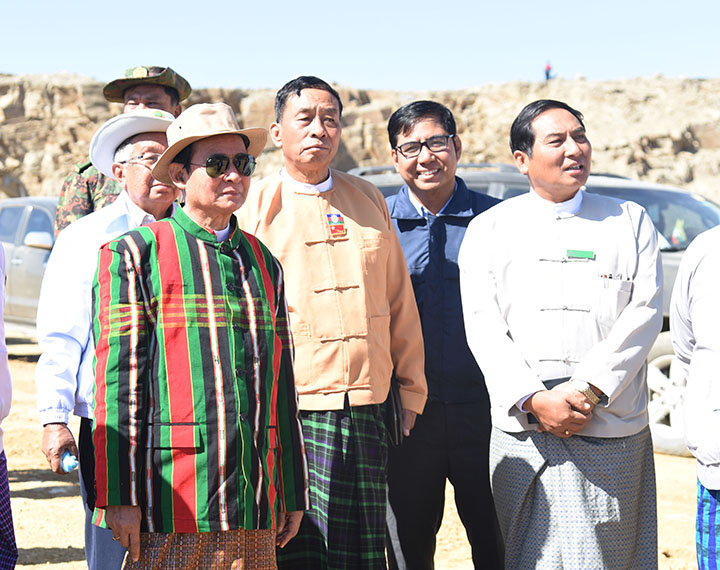6 May
“The State Government is working towards food security and reduced poverty by 2020-2021 fiscal year by creating more businesses and employment opportunities.”
Chief Minister Salai Lian Luai
If Chin State had to be described in two phrases it would be ‘peace’ and ‘serenity’, said the State’s Chief Minister Salai Lian Luai.
The Chief Minister also said, “There are no major conflicts in Chin State. It is peaceful and filled with peace and captivating sceneries of mountains and forests. We have Khaw-nu-soum, an ASEAN heritage mountain, Bungtla waterfall, and Rhi lake. The weather is always cold and the terrace farms are pleasing to the eyes.”
Chin State is located in the northeastern edge of Myanmar. It borders with Sagaing Region, Magway Region, Rakhine State, India and Bangladesh. Thus, Chin State is geographically advantageous for conducting border trade.
Therefore, the State Government is working towards food security and reduced poverty by 2020-2021 fiscal year by creating more business and employment opportunities.
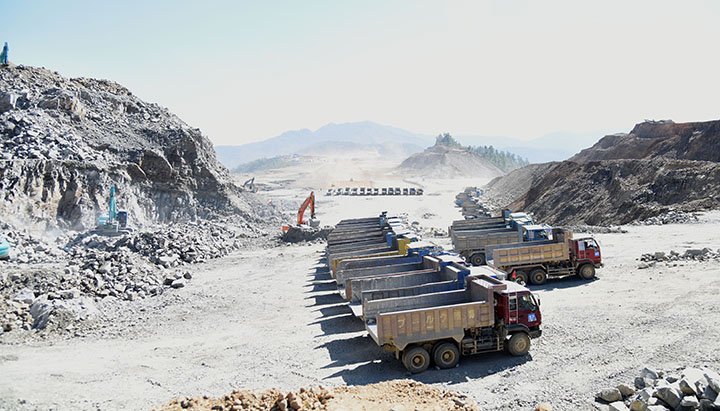
Policies
The State Government is enacting policies that will develop agriculture and livestock businesses that will boost regional development. The policies will make better infrastructure, develop MSMEs, sustainable development of nature, and other beneficial matters.
Objectives
The State Government has numerous objectives such as forming new terrace farms, conducting organic farming and planting more crops that bring in income. They will perform more livestock tasks that are better in line with the needs of the state. Better transportation within the state and beyond and increasing MSMEs for each home to increase their income.
Other objectives include generating more electricity, more urban municipal development, developing the human resource, education, healthcare and other services. Reducing unemployment and poverty rates and increasing job opportunities. Attracting more domestic and foreign investments, promoting research into socioeconomic development of Chin State, and increasing border trade.
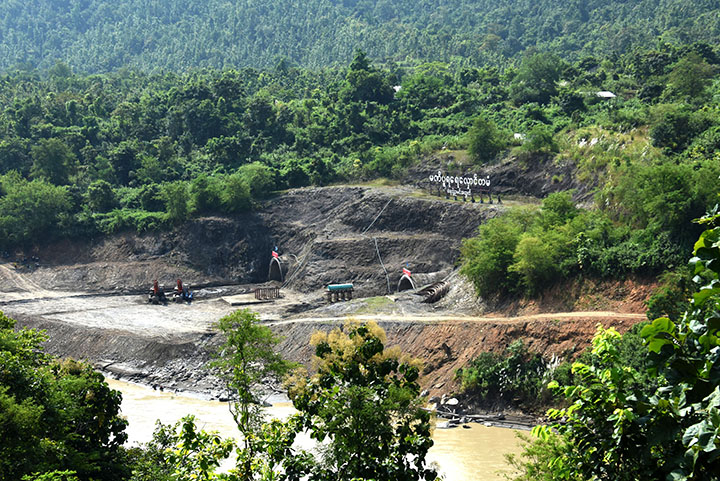
Tasks of the three pillars
The legislative pillar of Chin State has ratified the Local Project Law (3/2018), Budget Law (2/2018), Municipal Affairs Law (4/2018), Microfinance Law (5/2018) and Budget Allocation Law (1/2019).
The executive pillar upholds its duties from the subnational level down to the village level and works closely with the judicial pillar to administer fair justice in line with existing laws.
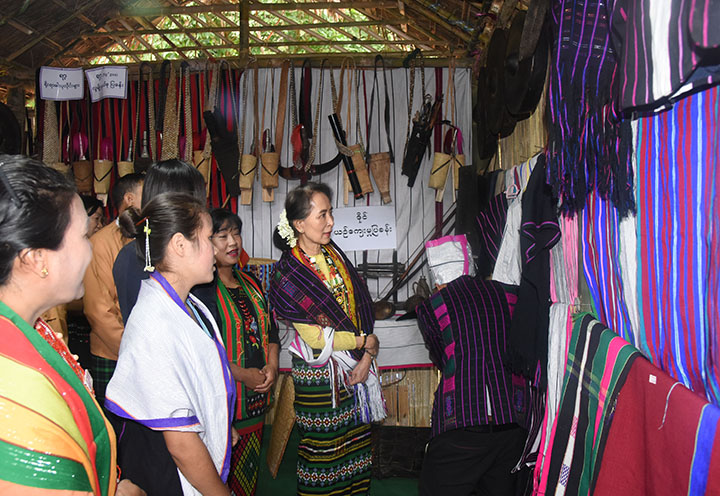
Regional development
The Chin State Government emphasized developing the relatively weak infrastructure of the State. From the 2016-2017 FY to 2018-2019 FY, the Rural Road Development Department implemented the Sa At-Tee Kyoh-Mhun Hlwa-Kyawt Thae-Lian Nhar-Reedhorda to a 21/6-mile gravel road, built 2 concrete bridges, 40 water ducts, 2 embankments, 3 road fortifications, and 1 canal using K3,077.950 million.
Rural Development Department
From 2016-2017 FY to 2018-2019 FY, the department used K2,724.1112 million from state funds and Union support funds to carry out 76 spring projects, 13 lakes and 76 other projects.
In 2018-2019 FY, the department conducted the NEP (ICB-III) for 317 solar villages and used allotted budget for 10 electrification projects. They constructed 324 rural houses using K1,134 million.
From 2016-2017 FY to 2018-2019 FY, the department used K1,222.0755 million to construct 6 offices, a staff residential building, a trade route and 3 water ducts on it.
The Union Government is implementing the Emerald Green Project in its third year of governance for 221 villages and 135 units using K4,050 million in assistance. The Village Development Project is underway and will use K918 million for developing 136 villages.
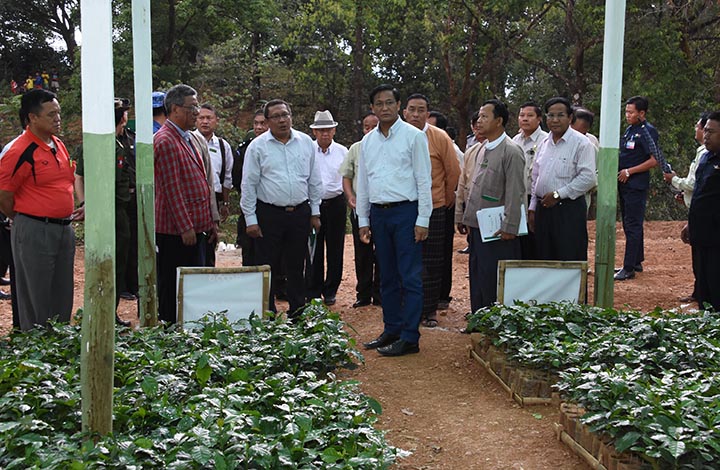
Chin State municipal committee
In 2018-2019 FY, they used K6,947.400 million from the allotted funds to pave asphalt and gravel roads, pave new roads, expand dirt paths, pave concrete and motorcycle roads, build water ducts and 95 other tasks, build bridges, buildings and implement urban water supply projects.
Public Health Department
The department will use K973.2 million from the Union budget to build a midwifery school in Haka so as to develop the healthcare sector in Chin State. The stake-driving ceremony for the construction was held on 11 March this year.
General Administration Department
From 2016-2017 FY to 2018-2019 FY, the department used funds from the state budget for implementing rural development projects in Tiddim, Tonzang, Falam, Haka, Thantlang, Mindat, Kanpetlet and Matupi townships.
Department of Roads
The department maintains 8 national roads and 25 subnational roads and implemented concrete roads, gravel roads, reinforced walls, 4,254 water ducts and grass plantations.
Terrace farming project
In 2017-2018, officials planted 79,140 acres of rice and 42,689 acres of corn and achieved 48.61 per cent of adequate food supply.
Domestic and foreign organizations who wished to collaborate on planting elephant foot yam, grapes, avocado, mulberry, orange and coffee were invited. Officials are now searching for markets to sell the produce.
Irrigation projects
The State Chief Minister said they used K1,926.83 million from the Union budget to establish the Agricultural Science School in Falam and was opened in February 2017. The school conferred diplomas to 40 students within 2018-2019. Opening the school enables Chin people to gain theoretical and practical experience concerning agriculture and this will develop the agricultural sector of Chin State, said Chief Minister Salai Lian Luai.
Bridge Department
In the third year of the State Government’s administration, the Department of Bridges used allotted funds from the Union budget to construct the Litvar Bridge, Thitar Bridge (1), Sayaw Bridge and Mwalzam (Branch) creek bridge. They also used funds from the Stat budget to construct the Thitar Bridge (2), Chi Chaung Bridge, a steel reinforced concrete bridge on Yayzwa-Lai Lin Pi Road, another on the Haka-Matupi road, and 4 more similar bridges on the Matupi-Paletwa road.
Despite its natural beauties, Chin State suffered from a shortage of tourists and investors mainly due to is poor infrastructure. But now, the Department of Civil Aviation is working on the Falam Airport (Surbung) and has reached the construction phase for the runway. The project was initiated in 2015 and is slated for completion by 2020.
“If I had to point out the most prominent and important project for Chin State then it has to be the Surbung airport construction,” said State Chief Minister Salai Lian Luai. He said the airport is located on a mountaintop 10.5 miles from Falam and 47 miles from Haka.
The Chief Minister said that the airport, once completed, will become the main air route into Chin State and will bring in an increased number of visitors and tourists in a short amount of time and will also allow regional products and local residents of Chin State to access other corners of the country.
Urban Planning Department
The department constructed 19 buildings with a total of 138 rooms for civil servants in Chin State during the three-year period.
State Development Oversight Office
During the three-year period, the office used border development funds from the State and the Union to implement dirt roads, gravel roads, asphalt roads, concrete roads, road expansions, maintenance, unsurfaced off-roads, cycle roads, concrete bridges, civilian and vehicle suspension bridges, maintaining bridges, civilian and vehicle wooden bridges, concrete water ducts, concrete canals and embankments.
In the healthcare sector, they organized the construction and renovation of hospitals, clinics, healthcare departments and upgrading them. They also carried out tasks for constructing staff residences, water supply and electric supply.
Education
A basic education high school, 9 basic education middle schools, 12 kindergartens, 7 staff residences, a preschool, a hostel, brick walls and embankments were constructed.
State Education Officer
From October to September of 2018-2019, the State Department of Basic Education utilized K14,070.703 million from its related working groups and departments to conduct projects and tasks in Kanpetlet, Tiddim, Tonzang, Thantlang, Paletwa, Falam, Mindat, Matupi and Haka townships.
Livestock
A center for livestock breeding and veterinary care and a multifunction breeding farm was established during the third year of the Chin State Government’s administration.
Energy sector
The State Government conducts such tasks as constructing hydropower stations, linking transmission lines, power plants, and hydro and solar powered systems for regional development.
The Department of Co-operatives in Chin Sate has sold one DS3510 tractor and nine DT100N tractors to ten co-operatives in five townships with an installment plan.
To transition to a mechanized agricultural system and upgrade farmlands, Chin State provided K279.600 million to 511 members of 14 co-operatives in 4 townships between 2016-2017 FY to 2018-2019 FY to develop their 932 acres of farmlands.
Haka Township was selected for development tasks as a role model for other townships in Chin State in the 2018-2019 FY. And from within that township, the Kun Kyone Agricultural Co-operative, Sein Pan Pyar Wholesale Co-operative, and Haka Township Co-operative were chosen for a K80 million loan to improve themselves as multi-development role models. The three co-operatives receive monthly visits from the State-level Oversight Group and the Township-level Oversight Group.
Natural disaster risk management
Chin State suffered 27 natural disasters between October 2018 to 25 February 2019. They received K12.884496 million in support and K56.362000 million for IDPs fleeing from conflict zones.
Collaboration with humanitarian organizations
The Chin State cabinet has collaborated with affiliated organizations, CSOs and humanitarian orgs such as UNICEF, WFP, UNDP, IOM, GRET, WV, LWF, IRC, SCI, MRCS, MCWA, MWAF, Save The Children, 3MDG Fund, KMSS, GREEN, HRC, CARD, CAD, AYO, COLDA, ACRD, CMA and CSO Network on healthcare, natural disaster prevention, regional development, loans for employment opportunities, newborn and child health, food security and others.
The State cabinet has also used the Recovery Credit program of the World Bank to renovate the Kalay-Falam-Haka road and is cooperating with CSOs and humanitarian orgs on the matter.
“Chin State’s transportation infrastructure is drastically improving. The roads to Haka, Falam, Thantlang, Matupi and Kanpetlet are now linked with concrete roads for better transportation. Communications-wise, 49.732% of the population are using mobile phones,” said Chief Minister Salai Lian Luai.
The apparent development of mobile phone communication technology and the Internet has made it easier for the public and civil servants to gather knowledge and be updated on the political, social, military and climate news of the world, said the Chief Minister.
Long-term projects in Chin State include the Kaladan River Project, Paletwa Industrial Zone, Bon Zoan Industrial Zone and Kaing Kam Industrial zone.
The Chief Minister also mentions the vast potential for investment in the state’s hotel and tourism sector, infrastructure construction projects, mining, cotton and traditional weaving. “I invite all prospective investors to Chin State,” said the Chief Minister. “Please, come visit Chin State. Explore it. Try investing in it. And try conducting business with it. The Chin State Government takes full responsibility for you to do business peacefully and efficiently.”
Contribution to peace process
The Chin National Front explained the discussions of the Third Session of the Union Peace Conference – 21st Century Panglong to local people at a discussion held at the TBC Christian Hall in Thantlang, Haka District, from 21 to 23 August 2018. There were 130 local people interested in politics who attended.
Successful reforms
The municipal committees at the district/township levels work closely with the Committee for Reviewing Confiscated Farmlands and Other Lands and has successfully reduced unwanted issues for the public. They have also improved the basic needs and living standards of the people.
The Chin State Government follows the policies and procedures set by the Union Government and will continue to work towards regional development with added momentum.
By Nandar Win
(Translated by Pen Dali)
